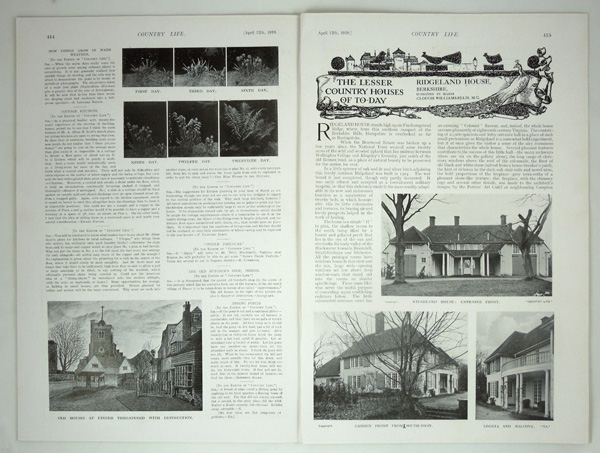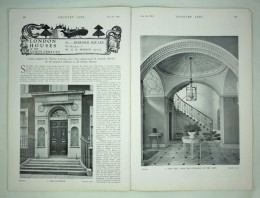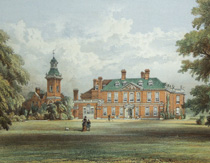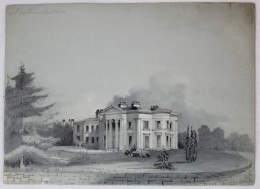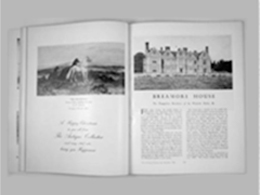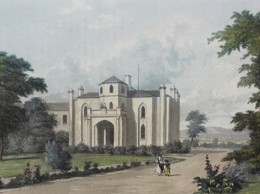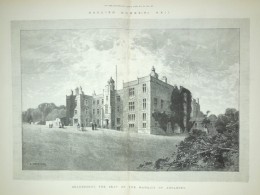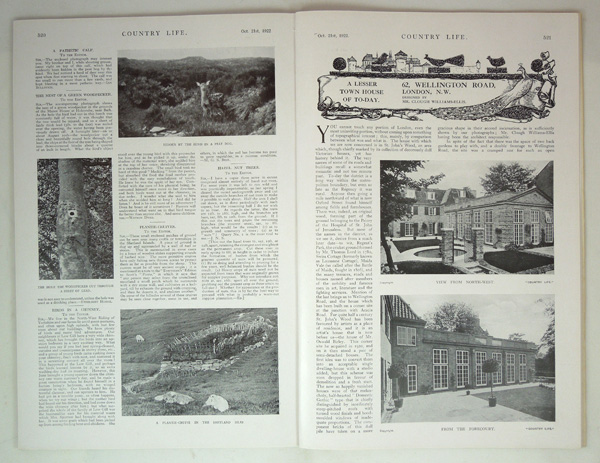
Sir Clough Williams-Ellis (1883-1978)
Born in Northamptonshire, Bertram Clough Williams-Ellis was the son of scholar, poet, mountaineer and priest John Williams-Ellis and Ellen Mabel Greaves, daughter of a Welsh slate mine owner. His life in Wales began at the age of 4 when his father retired and returned to his homeland in North Wales where he would form a love for the rugged landscape that would dominate the rest of his life and become his true home.
Educated at the renowned Oundel School during the tenure of F.W. Sanderson, Williams-Ellis would then attend Trinity College, Cambridge but never graduate. Instead Williams-Ellis would enrol himself in the Architectural Association School of Architecture, however, so precocious was his talent that within only a few months he would take on his first commission and depart the school after a year to open his own practice in 1904.
Five years before his death John Williams-Ellis in 1908 would hand over the Plas Brondanw estate to his son. Clough would later describe this as “Nothing, just then, could have been more ecstatically welcomed”. This rooted him to North Wales with its restoration and refurbishment on going for the rest of Williams-Ellis’ life, he would not abandon the family home they had occupied for four centuries even after a devastating fire in 1951.
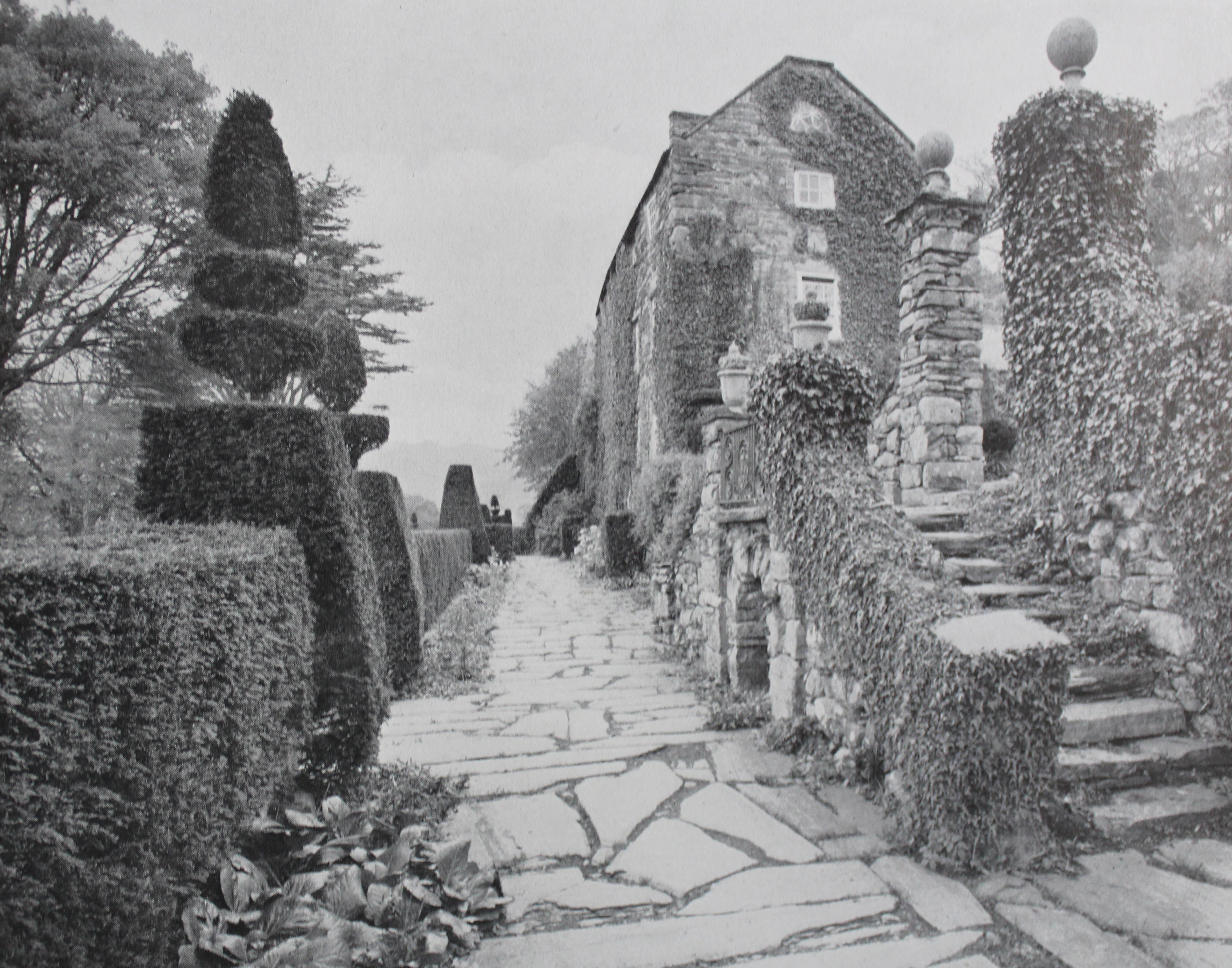 At Plas Brondanw he would construct his first truly romantic structure, The Castle Folly. Marrying in 1915 the author and early member of the Bloomsbury Set Amabel Williams-Ellis (Mary Annabel Nassau Strachey) he displayed his eccentric nature, when he requested the faux ruin as a wedding present from his then commanding officer in the Welsh Guards instead of a silver platter. The folly would become a filming location for Ingrid Bergman’s Inn of the Sixth Happiness as well as Doctor Who.
At Plas Brondanw he would construct his first truly romantic structure, The Castle Folly. Marrying in 1915 the author and early member of the Bloomsbury Set Amabel Williams-Ellis (Mary Annabel Nassau Strachey) he displayed his eccentric nature, when he requested the faux ruin as a wedding present from his then commanding officer in the Welsh Guards instead of a silver platter. The folly would become a filming location for Ingrid Bergman’s Inn of the Sixth Happiness as well as Doctor Who.
Williams-Ellis would gain his first major commission in 1913 with the reconstruction of Llangoed Hall (where he drew on inspiration from the only living architect he admired at the time, Sir Edwin Lutyens). The project was paused by the First World War when he would serve with the Welsh Guards and earn his Military Cross. Completing this project in 1919 after returning from the war Clough would soon begin his seminal work of Portmeirion.
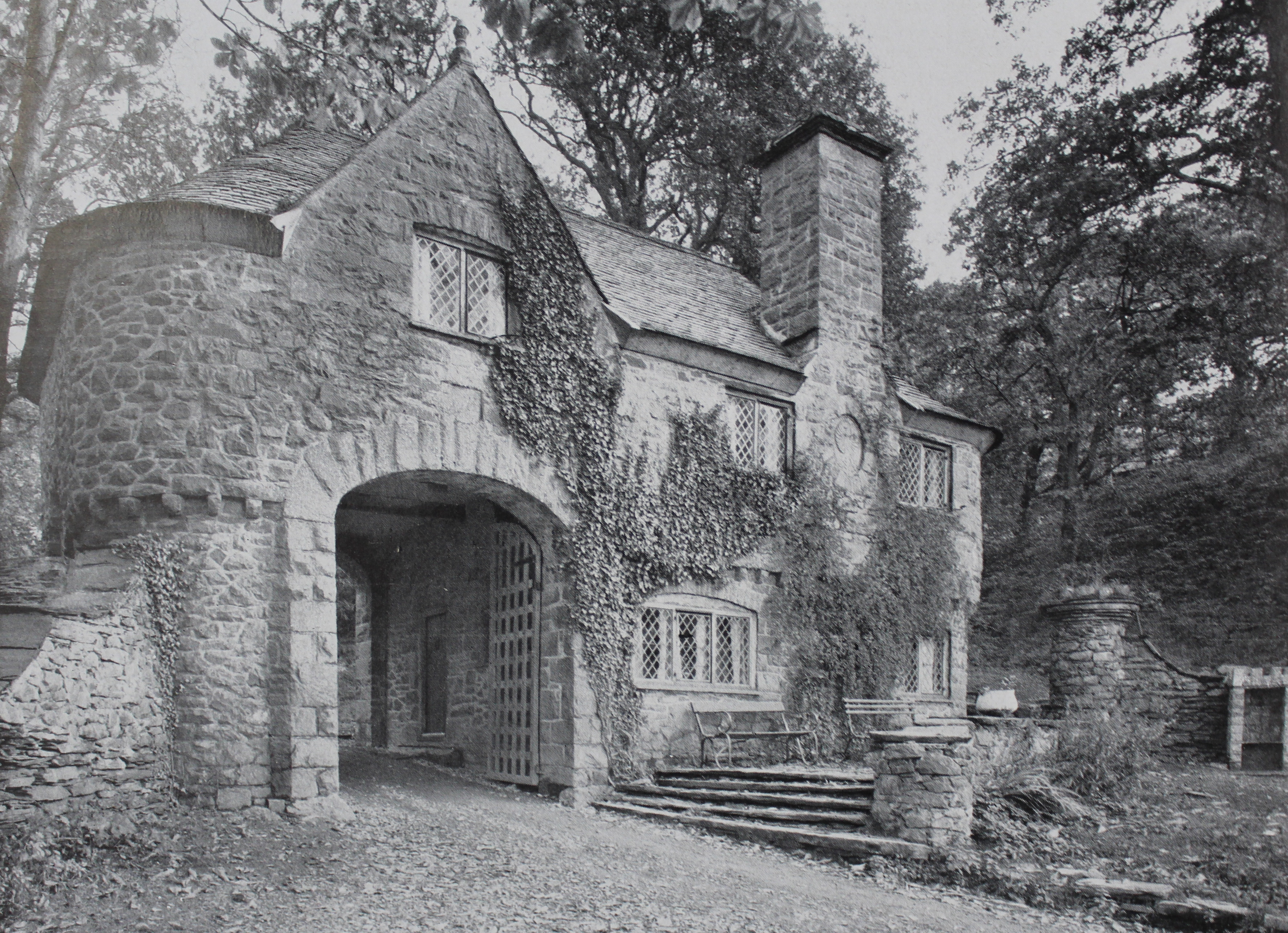
In 1925 he acquired the Aber La estate with the ruinous remains of Castell Deudraeth and using the name of the county in which it stands Merioneth, along with its coastal position he re-named the estate Portmeirion. Here Williams-Ellis would be able to indulge his passion for clusters of small building as well as preservation. Described by Clough himself as “a home for fallen buildings” he would incorporate parts from demolished buildings such as the ceiling of Emral Hall which is now part of Hercules Hall and a Norman Shaw fireplace becoming part of the Dome. This Italian style village gained a permanent place in popular culture when the television series “The Prisoner” would be filmed there during the late 1960’s. The last part of Williams-Ellis’ vision for Portmeirion would not be completed until 23 years after his death with the opening of the re-built Castell Deudraeth as a central hotel for the site.
Clough was at the height of fashion during the 1920s and 30s designing and altering properties; although it would not be until Nantclwyd Hall in the 1960’s that he would have a project to match in size Llangoed. The fees he would earn in England during this interwar period allowed him to purchase land to secure a green belt around Portmeirion and also gift land to The National Trust. His 1928 book “England and the Octopus” would not only inspire the Ferguson’s Gang but form an outline of Cloughs passion for preserving the countryside. Today he would be described as an environmentalist and he played an instrumental part in the creation of The National Parks Act of 1947.
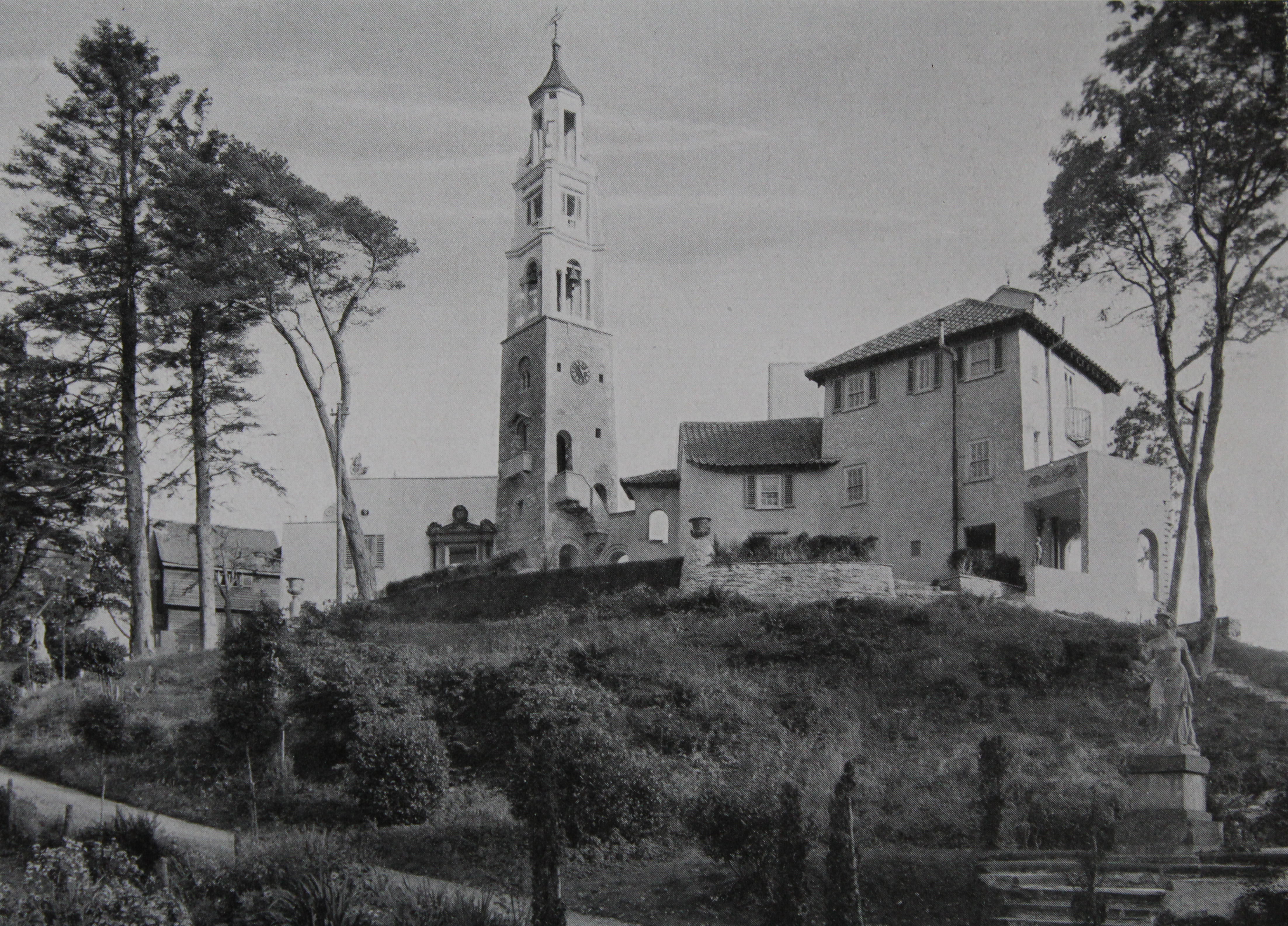 Although Williams-Ellis worked on such places as Bolesworth Castle, Great Hundridge Hall and Moyns Park he would comment later in life that it was small group building that truly interested him which he demonstrated not only at Portmeirion but also at Cornwell in Oxfordshire and Oare in Wiltshire. Williams-Ellis would oversee his final construction at Portmeirion in 1977 just one year before his death aged 94.
Although Williams-Ellis worked on such places as Bolesworth Castle, Great Hundridge Hall and Moyns Park he would comment later in life that it was small group building that truly interested him which he demonstrated not only at Portmeirion but also at Cornwell in Oxfordshire and Oare in Wiltshire. Williams-Ellis would oversee his final construction at Portmeirion in 1977 just one year before his death aged 94.
 Not just a prolific architect but also a writer and activist, the breadth of Clough Williams-Ellis' work, talent and interest in the environment has become somewhat over shadowed by his master piece of Portmeirion. However, this largely self-taught visionary has left a much larger legacy than that is contained in the buildings of this most famous village with his ideas of architecture and environment being even more relevant today than during his lifetime.
Not just a prolific architect but also a writer and activist, the breadth of Clough Williams-Ellis' work, talent and interest in the environment has become somewhat over shadowed by his master piece of Portmeirion. However, this largely self-taught visionary has left a much larger legacy than that is contained in the buildings of this most famous village with his ideas of architecture and environment being even more relevant today than during his lifetime.

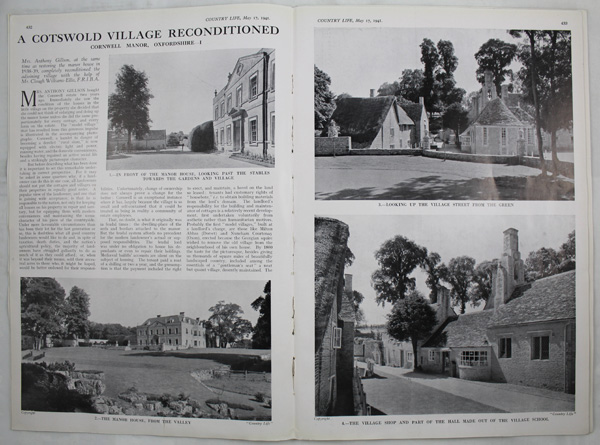
Cornwell Manor (Part-1), A Cotswold village reconditioned
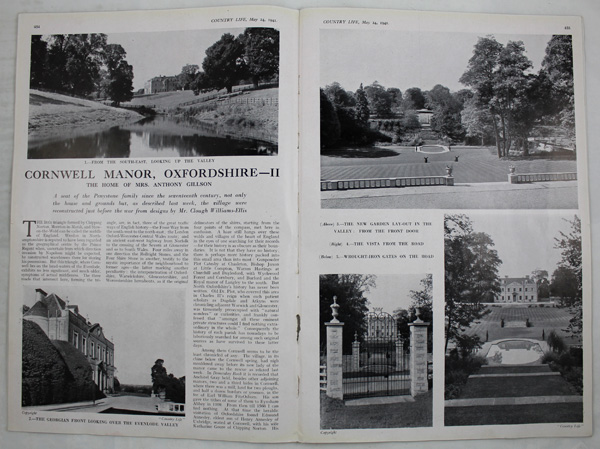
Cornwell Manor (Part-2), The Home of Mrs. Anthony Gillson
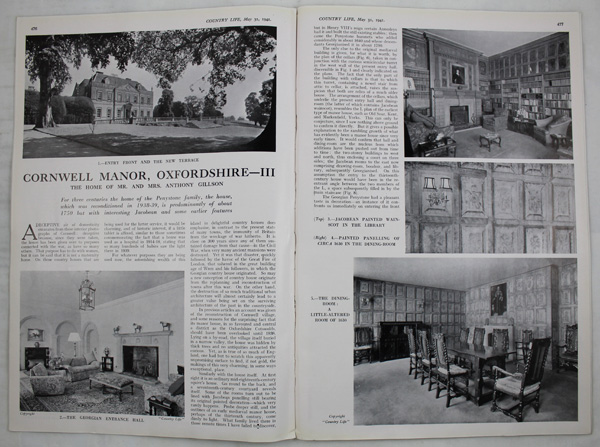
Cornwell Manor (Part-3), The Home of Mr and Mrs. Anthony Gillson
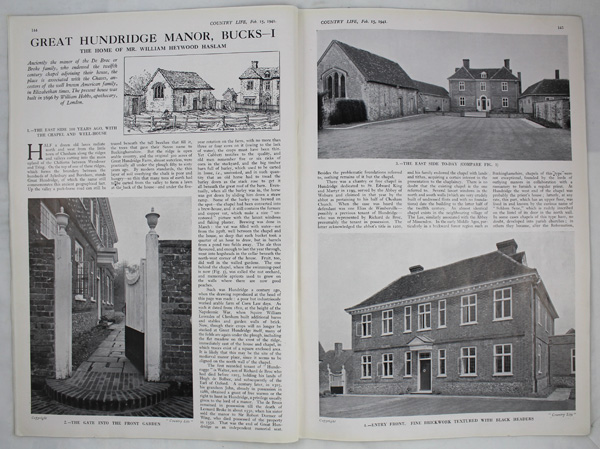
Great Hundridge Manor (Part 1), The Home of Mr. William Heywood Haslam
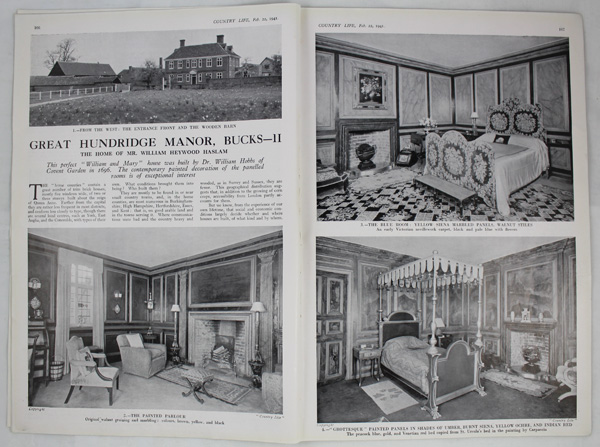
Great Hundridge Manor (Part 2), The Home of Mr. William Heywood Haslam
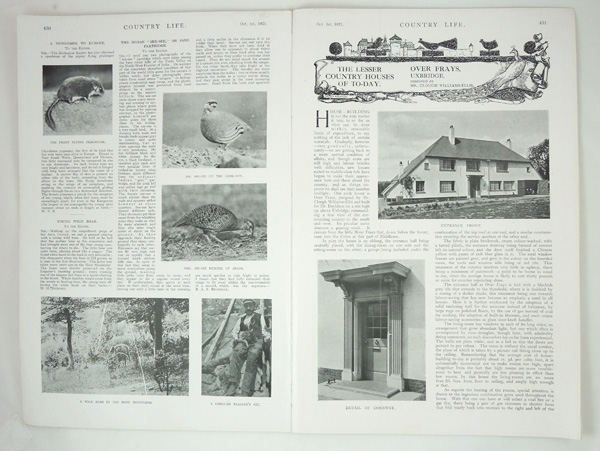
Over Frays, Uxbridge, Designed by Mr. Clough Williams-Ellis

Plas Brondanw, The Property of Mr. Clough Williams-Ellis
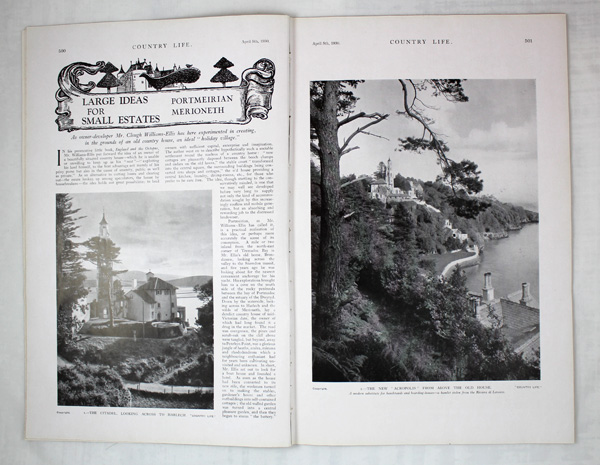
Portmeirion Merioneth, Owner-developer Mr. Clough Williams-Ellis.
